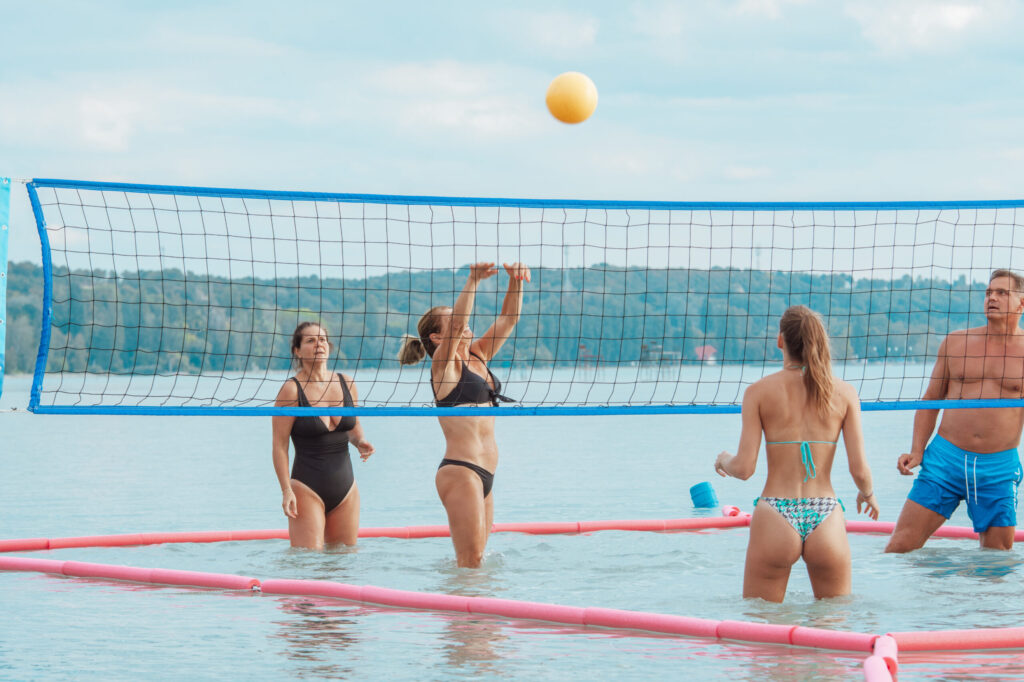What does aQuolley W-Ball mean?
aQuolley W-Ball, or aQuolley, refers to a water-based version of beach volleyball. The game is played in a lake or similar body of water, and it involves using a special ball, a unique net, and rules specifically adapted for aquatic play. Unlike traditional beach volleyball, aQuolley incorporates the challenges and dynamics of playing in the water, making it a distinctive and enjoyable water sport. The registered name “aQuolley” is likely a combination of “aqua” (water) and “volleyball,” emphasizing its aquatic nature.
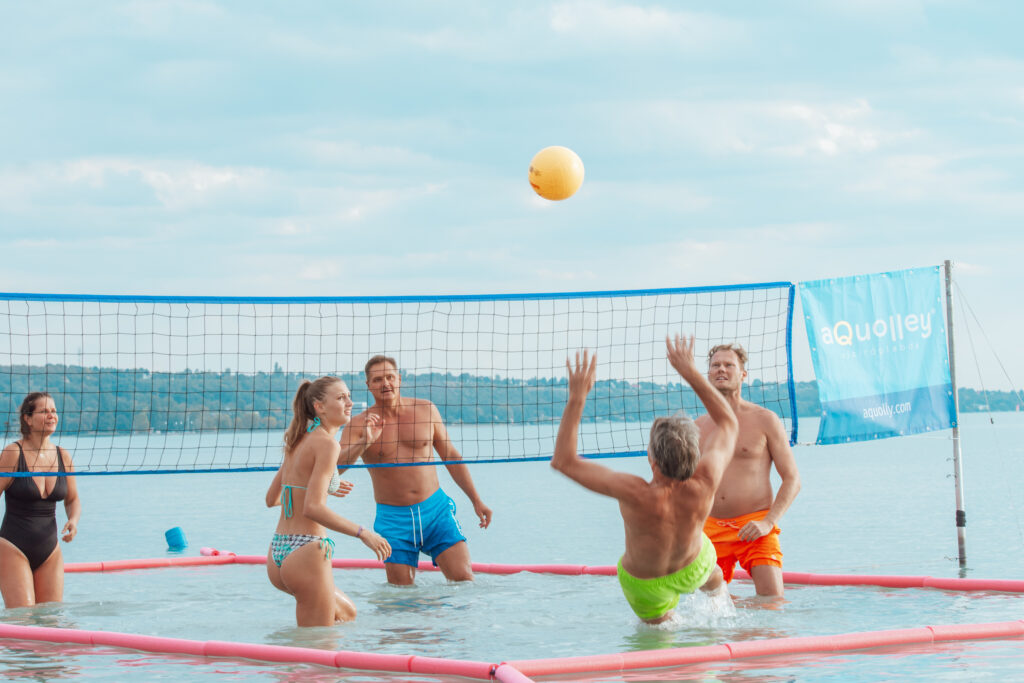
Variations in Other Regions
The current narrative of aQuolley, or aQuolley W-Ball, has historical roots. Globally, specific components have been present online for some time under different names like aqua volley, water volleyball, pool volley, and splash volley. Searching for any of these terms may yield various products from different manufacturers. These are typically costly and particularly inflexible, being inflatable monolith courts. Videos from different regions suggest that the rationalization and standardization of rules have not been universally established.
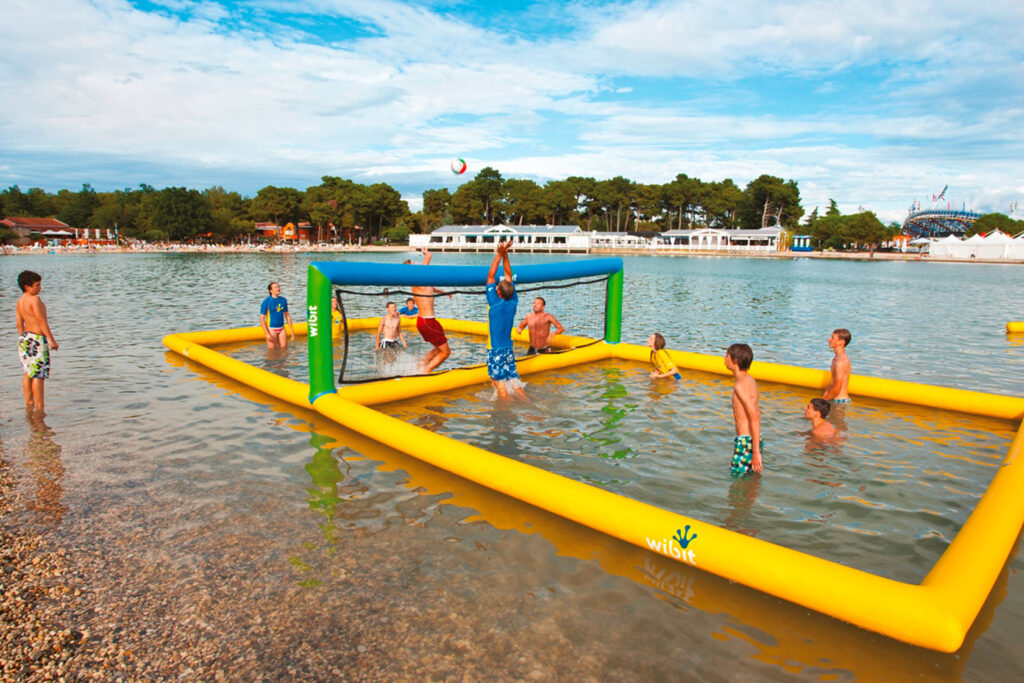
What is needed for aQuolley games?
Suitable Water Environment
Ideal locations for aQuolley courts are situated at lakes and river bathing sites with sandy or pebbled waterbeds. There are specific situations, where setting up the court would be impractical. Muddy bottomed lakes or riverbeds lack the necessary compactness to support the players weight establishing the court to be unviable. Moreover, if the substrate is solid but poses risks for barefoot movements due to stones, gravel, and other debris, it is recommended to avoid setting up the court to prevent potential injuries.
aQuolley Court
One must establish the limits of the gaming area, which involves marking court lines and positioning the net according to the rules of the game.
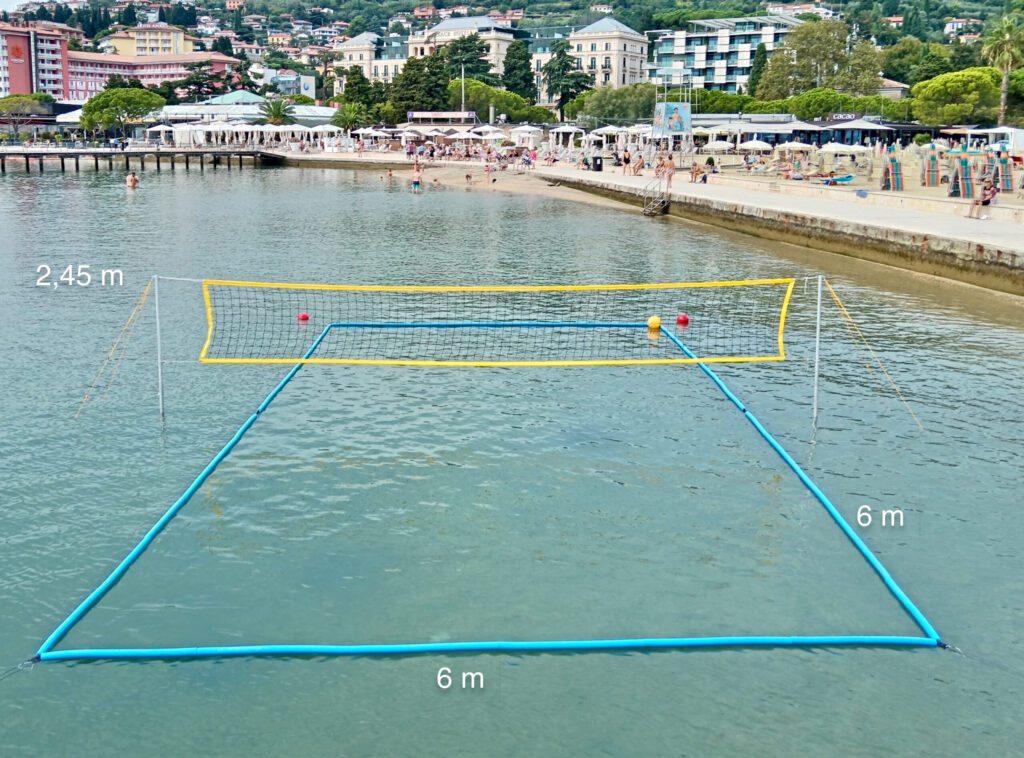
Ball
Despite aQuolley W-ball is a popular leisure activity globally, each country having its unique variations in courts and rules, there is currently no dedicated ball designed for this purpose.
In the initial stages, it was discovered that beach volleyball balls are unsuitable for aquatic use due to their excessive weight and lack of flexibility. An immediate concern arises from the potential risk of a beach volleyball causing injury to an amateur player’s arm or hand in the water, which contradicts the intended nature of the activity.
Additionally, a more serious concern emerges from the increased weight of the beach volleyball after being played with, in the water for more than 5 minutes. Although a beach volleyball ball as heavy as that may not cause the destruction of an aQuolley court, it does have the potential to easily disturb the tension of the net and its supporting ropes.
At present, it is advisable to use a sufficiently sensitive, lightweight rubber or PVC, size 5 or 6 balls when playing with aQuolley W-ball in the water.
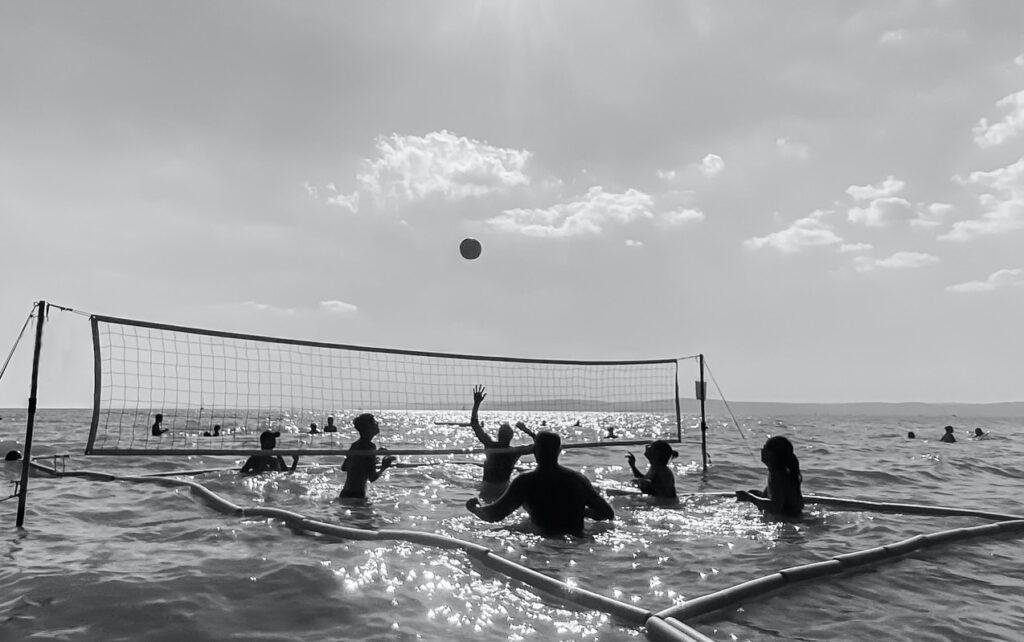
Adaptation to Present Needs
Number of Players
aQuolley® MWS, with its adjustable court size and net height, offers an ideal setup for entertaining groups of 2 to 16 people. The rules allowing three consecutive touches mean that even a showdown between two individuals can be incredibly intense and visually striking. Certainly, during individual matches, it’s crucial to focus on effective fitness management. Extended rallies can rapidly deplete the energy of even the most physically fit athletes in a sport where substitutions are not permitted.
Certainly, the optimal court size consistently corresponds to the exact number of players on each team, as specified in the relevant sections of the rules. If needed, adjusting the court dimensions can create a scenario where teams with an unequal number of players still have roughly equal chances to compete against each other.
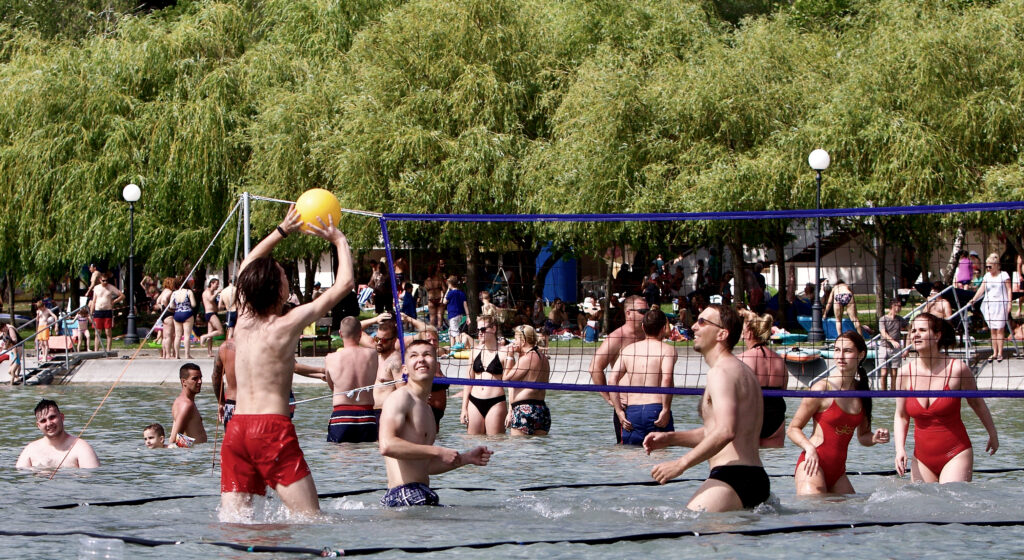
Court size and net height
As the participants’ skill level increases, a larger court size per person becomes feasible. Lowering the net height enhances the efficiency and speed of finishing touches, intensifying both attacks and defences, thereby requiring more vigorous efforts from the participants. Conversely, raising the net height can decelerate the game, and decreasing the court size per person can simplify the game.
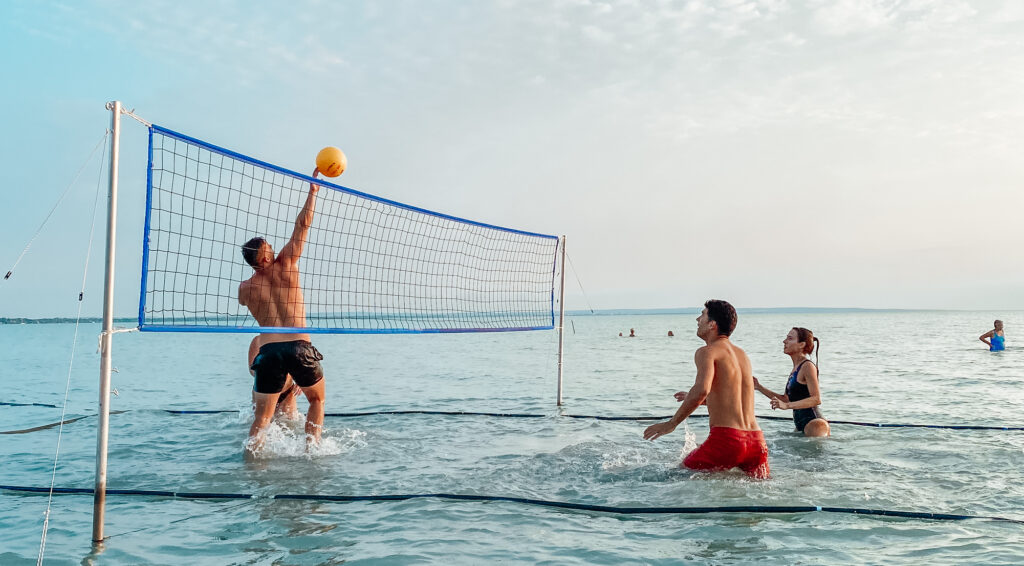
Choosing the Discipline
The true charm of aQuolley W-Ball is unveiled in its mixed discipline, enabling individuals of various ages and genders – boys, girls, men, women, seniors and the young to compete in diverse combinations. The rules of doubles, triples, and team disciplines are thoughtfully crafted to facilitate adaptation to mixed compositions. The properly selected court size and net height, creates equal chances for both teams, fostering intense battles for victory.
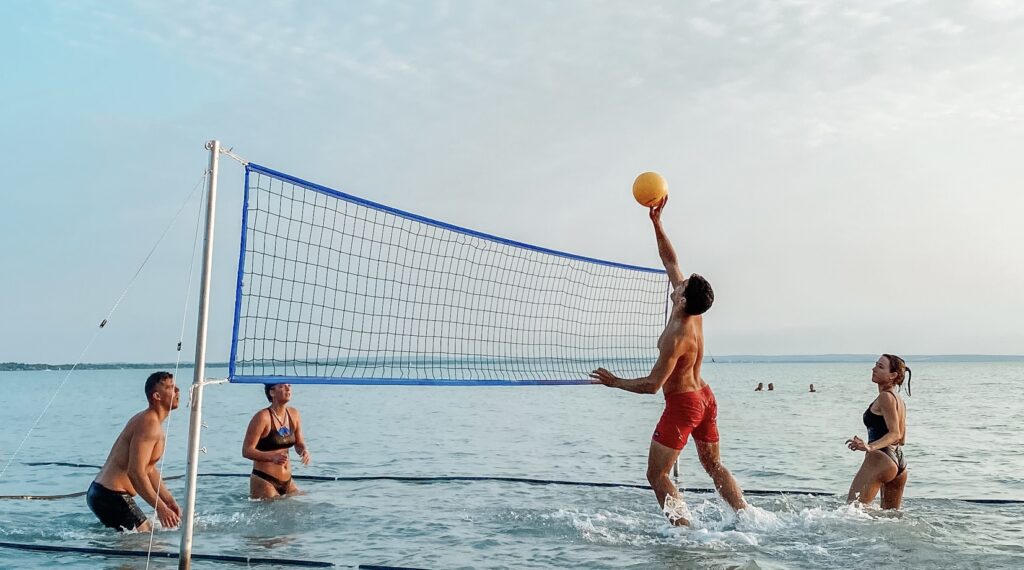
Introduction of Categories
The ultimate goal of any recreational activity is to enable family members (husbands and wives, brothers and sisters, girlfriends and boyfriends, and others) to play together as a team. Mixed doubles, mixed triples, and mixed team disciplines all serve this purpose. Although this competition format may diminish some of the sporting value, the joy of playing with loved ones can serve as ample compensation for this loss.
However, it would be less than ideal if teams organized on a multi-generational, family-oriented basis had to compete against active volleyball players. Due to this situation, it is recommended to introduce competition categories.

Target audience
Functioning as a team sport, aQuolley W-Ball plays a vital role in local community-building, fostering stronger connections within family members, friends, or community-based groups. Through carefully selected rules and supporting infrastructure, aQuolley W-Ball has the capacity to embrace individuals from 10 to 75 years old in its target audience, without demanding extreme physical abilities or specific skills. By mastering the minimal technical basics, the game becomes instantly enjoyable for all, catering even to beginners.
